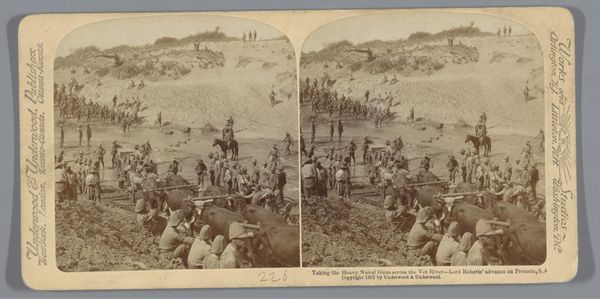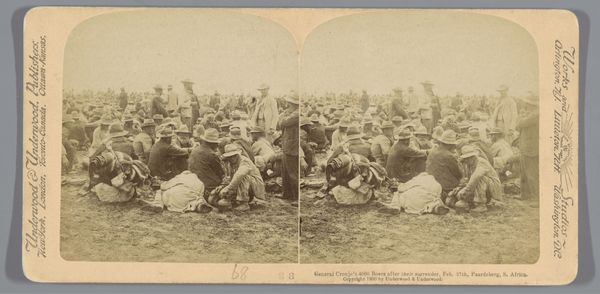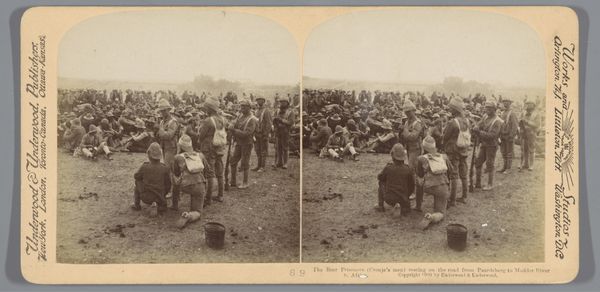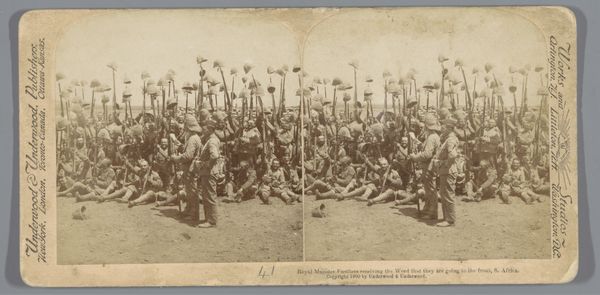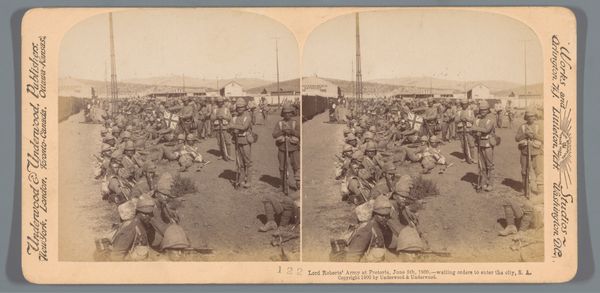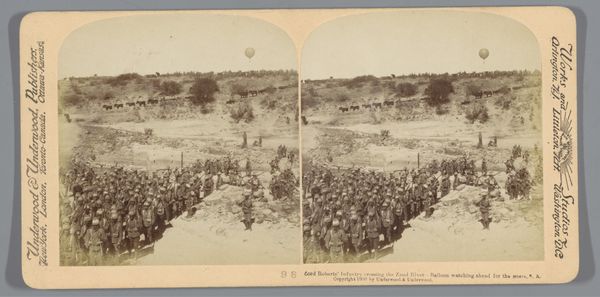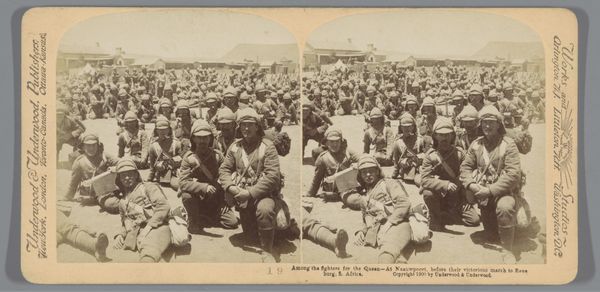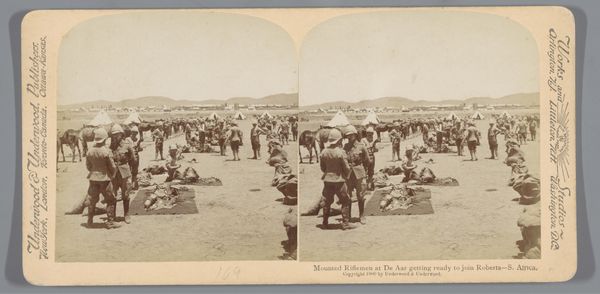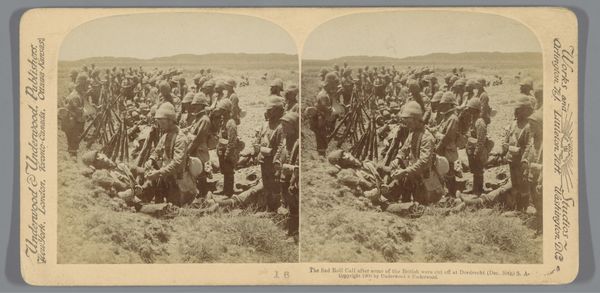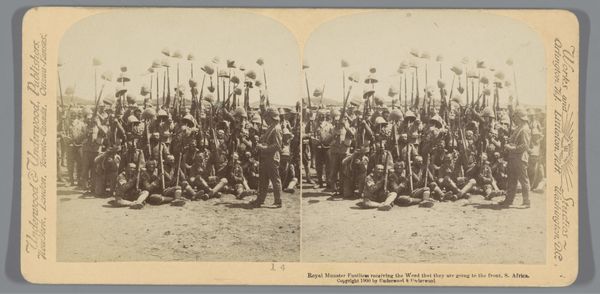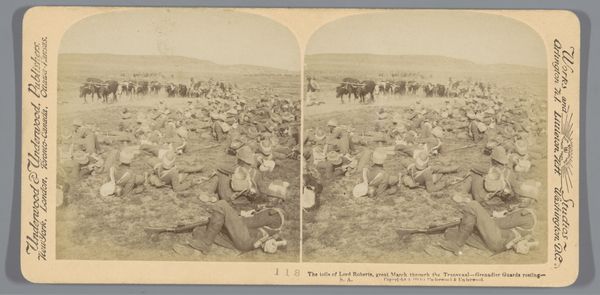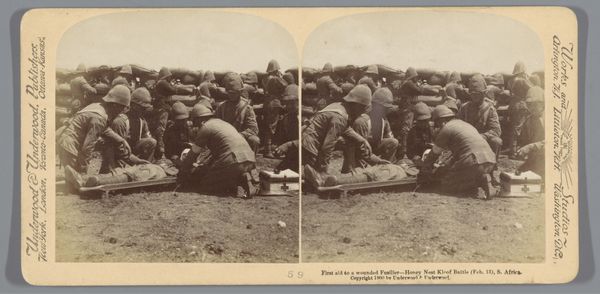
Voorstelling van Britse soldaten die een heuvel bestormen in Graspan, Zuid-Afrika 1901
0:00
0:00
photography, gelatin-silver-print
#
landscape
#
photography
#
gelatin-silver-print
#
history-painting
#
realism
Dimensions: height 88 mm, width 178 mm
Copyright: Rijks Museum: Open Domain
Curator: Before us, we see an anonymous gelatin silver print dating from 1901, titled "Representation of British Soldiers Storming a Hill in Graspan, South Africa". Editor: A stark, relentless image. The sheer number of soldiers gives me an unsettling feeling of a faceless, inevitable force grinding its way up that desolate hill. The muted palette, of course, intensifies the somber mood. Curator: Indeed. From a formalist perspective, notice how the composition leads our eye upward. The artist uses the natural terrain to create diagonal lines, guiding our vision from the foreground of fallen soldiers to the mass ascending toward the stark, almost barren hilltop. Editor: And look at the sheer labor and material involved in such a venture—supplying these men with uniforms, weapons, equipment, transporting them to a battleground like this. Consider the means of production: the silver processed for the gelatin print itself extracted at some human cost. The context of imperialism and its relationship to these exploited resources... It shifts my reading considerably. Curator: True. There's a certain propagandistic air. The stark realism belies a highly constructed image. The even distribution of light seems to flatten the space and neutralize the inherent chaos of battle, almost idealizing this ascent. It's carefully balanced between representing the war and glorifying its participants. Editor: Perhaps a tension designed into the image to soothe audiences back home; while ostensibly offering 'realism', it glosses over the grim mechanics and economics, all the raw materials and human bodies tossed into the gears of the imperial war machine. Curator: That point is hard to deny, given the image's stark and detailed portrayal. Considering its period, though, it presents an interesting intersection of photographic realism attempting to emulate the grand narratives typical of history painting. Editor: Analyzing the labour, materials, context—it all reveals that even what claims to be 'real' involves considerable manipulation. This work has made me rethink conflict, material, and history, and how photographic images reinforce power structures. Curator: Seeing it that way allows one to also appreciate the image for its structure and form, while recognizing how deeply its construction serves power and propaganda. A disturbing harmony.
Comments
No comments
Be the first to comment and join the conversation on the ultimate creative platform.
